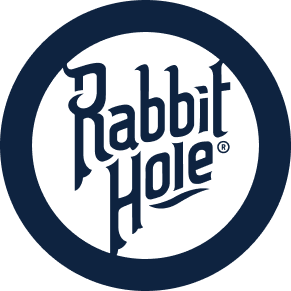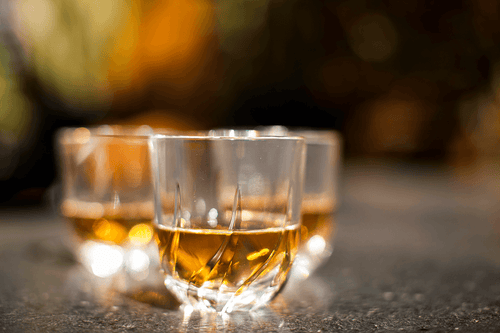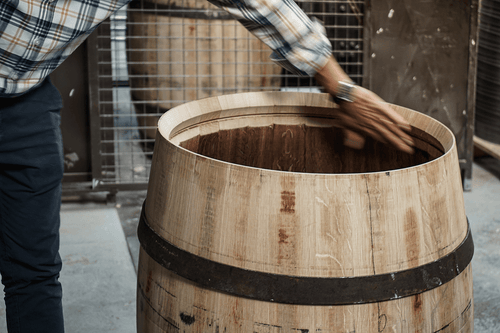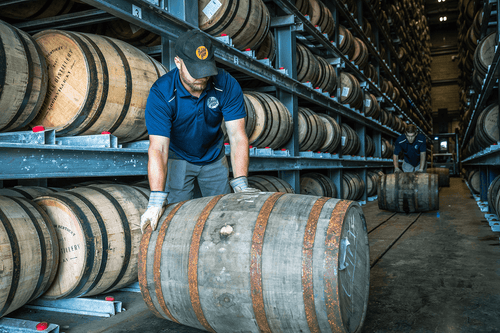Original Four Grain Bourbon
THE ORIGINAL
FOUR GRAIN BOURBON
There is no universal approach to manufacturing a good bourbon. To create a unique blend, some distillers change the composition of the ingredients in bourbon's mash bill. While most distillers stick to the three-grain mash bill, others experiment with a four-grain mash to bring a complex, distinctive flavor to bourbon...

What Is a Four-Grain Bourbon?
An infinite number of compositions are possible, especially considering the numerous factors that influence the taste profile of the bourbon. Different compositions of raw ingredients, processes, and aging time give birth to new variations in bourbon.
Given the complex nature of the grain mash, four-grain bourbon has a complicated production process. Most traditional bourbons are three-grain recipes consisting of corn, rye or wheat, and malted barley. Adding one more grain to the mix changes the equation, providing depth to the bourbon, especially for bourbon-based cocktails.
A four-grain bourbon includes corn, rye, wheat, and barley as the core ingredients. As long as bourbon makers follow the U.S. federal law that requires bourbon to contain at least a 51% corn composition, distillers can experiment with the percentages of other grains.
Mash Bill
The mash bill of a four-grain bourbon constitutes approximate percentages of the grains below:
- Corn: 51%
- Wheat: 22.5%
- Barley: 19%
- Rye: 7.5%
Corn
When whiskey makers began producing whiskey in Kentucky, corn and rye comprised the composition. The weather conditions of Kentucky suited these crops well. However, corn whiskey gained more popularity, and by the 1870s, corn became the main ingredient of whiskey produced in Bourbon County, Kentucky. By 1933, the government set clear regulations that the bourbon produced for sale in the United States must have at least 51% corn. Corn imparts a sweet taste to bourbon, balanced by other flavoring grains.
Wheat
When wheat appears as the secondary flavoring grain, an entirely different flavor of bourbon is born. The presence of wheat in bourbon makes it easygoing even for novice drinkers. Wheat provides subtlety and contrast, adding more creaminess and gradual sweetness to the spirit. The taste profile of wheat is associated with a more rounded mouth feel and a mellow finish.
Wheat allows the corn's natural sweetness to shine along with the barrel's light woody taste. Depending on the quality of wheat used and its percentage, a four-grain bourbon's taste profile replicates a fresh bread and toffee aroma with traces of butterscotch and traditional flavors of honey and caramel. Wheat provides a long and gentle finish to the bourbon.
Barley
Since whiskey is a grain-based spirit, converting a grain mash into alcohol is difficult. Grains contain complex carbohydrates that help the plants to sprout and grow. They don't have the simple sugars required to make alcohol. Here is where malted barley comes into the picture. Malting is the process of germinating grains to help initiate the fermentation process. It adds complexity to the drink's taste profile, mouth feel, and sweetness.
Barley is moistened and allowed to germinate partially. The malted barley produces enzymes that break down complex carbohydrates from the grains into sugars. This process is called malting.
Then, an organism called yeast enters the grain mash. It eats the sugar from the mash and initiates the fermentation process.
Until a few years ago, the flavor of malted barley had become synonymous with the overall taste profile of bourbon. It had become a fixed component in the grain mash besides corn. However, today, some distillers use chemically created enzymes in place of malted barley.
Rye
Using rye as one of the secondary flavoring grains in the bourbon mash bill gives a spicy edge that complements the sweetness of corn without an excessively strong peppery tinge which identifies with rye whiskey.
Using rye in bourbons bridges the gap between the softer and sweeter taste profile of bourbons and the greener, sharper tone of rye whiskeys. Rye adds spicy, peppery notes to the bourbon with hints of herbs, grass, and licorice.
Adding rye provides a spicy flavor to the sweet corn taste and the malty barley flavor of bourbon. In a four-grain bourbon, since both rye and wheat appear in varying proportions, the resulting distillate imbues a complex character — sweet and spicy, with lots of depth.
Why Choose a Four-Grain Bourbon?
A four-grain bourbon has an inherently greater depth in terms of flavor. The mash of all four grains brings a balanced sweet and spicy profile to the bourbon.
People around the world have different taste preferences. If you incline toward spicy drinks, you may choose a high rye bourbon. If you are new to the world of bourbon or don't like intense peppery flavors, you may select a wheated bourbon. But if you are a bourbon enthusiast with a preference for complex flavors of many different flavors, a four-grain bourbon or a four-grain triple malt bourbon is your best choice.
These parameters will help you decide better if you educate yourself on the distilling caveats of the particular bourbon brand.
- How is the particular bourbon different than others?
- Does the four-grain bourbon have other unique attributes?
- What taste profile results from utilizing four grains in the bourbon?
Unlike the traditional three-grain bourbon, a four-grain creation ideally exceeds expectations with its complex taste profile. If you consider Cavehill Kentucky Straight Bourbon Whiskey, you'll encounter a four-grain, triple-malted bourbon. It consists of corn, honey, malted barley, malted rye, and malted wheat.
Twice malted and one honey-malted grain imparts a unique character to the bourbon. It brings out the flavor of sugars and other elements of raw grains.
The distilled alcohol, when sent for barrel aging, permeates the barrel and draws out unique flavors from the new toasted and charred oak barrels. The palate of this bourbon consists of aromas of spices and fresh apples, honey, and creamy orange sweetness. It evolves into an overall custard and vanilla flavor for the bourbon.
With such diversity in bourbon profiles, the ones you choose to drink come down to personal preference. Look for the distinctive Cavehill bottle from Rabbit Hole Distillery and explore the world of four-grain bourbons.






















